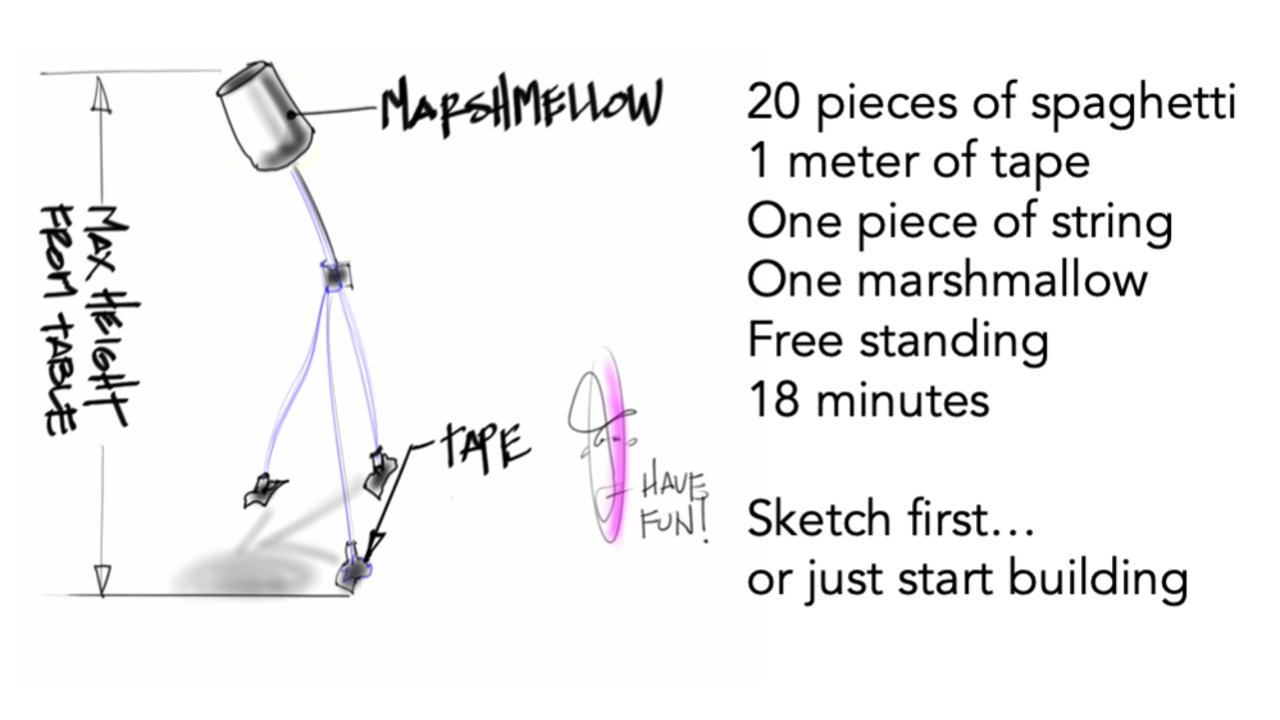Power with vs. power over
Ego-driven power struggles disrupt team communication.
The Marshmallow Design Challenge, created by Peter Skillman, can help us understand this dynamic.
The experiment gives teams of four, 20 pieces of spaghetti, a meter of tape, some string, and 18 minutes to build the highest structure that will support a marshmallow.
After doing this for five years, Skillman has discovered a few things about the ways teams communicate.
First, working in parallel produces better ideas than teams working in isolation.
Secondly, “You never get more unless you ask, and adults accept the rules as sacrosanct.”
Finally, kindergartners consistently achieve the highest score of any group ever tested, including engineers and CEOs.
Why?
It may be the same reason that business school students are the lowest-scoring group.
The answer has nothing to do with design skills, leadership skills, or creativity skills.
It has everything to do with the way they communicate.
Skillman says:
Kindergartners don’t waste time in status transactions. There’s no discussion about who will be the leader. They just jump in and do it, and
They don't sit around talking about the problem. Many business school student teams end up with a score of zero. Not because they’re not smart, but because they couldn’t cooperate.
One of the lessons Skillman takes away is that children “experience the thing directly.”
Without their egos getting in the way, kindergartners are able to achieve more by using power with, rather than power over.

